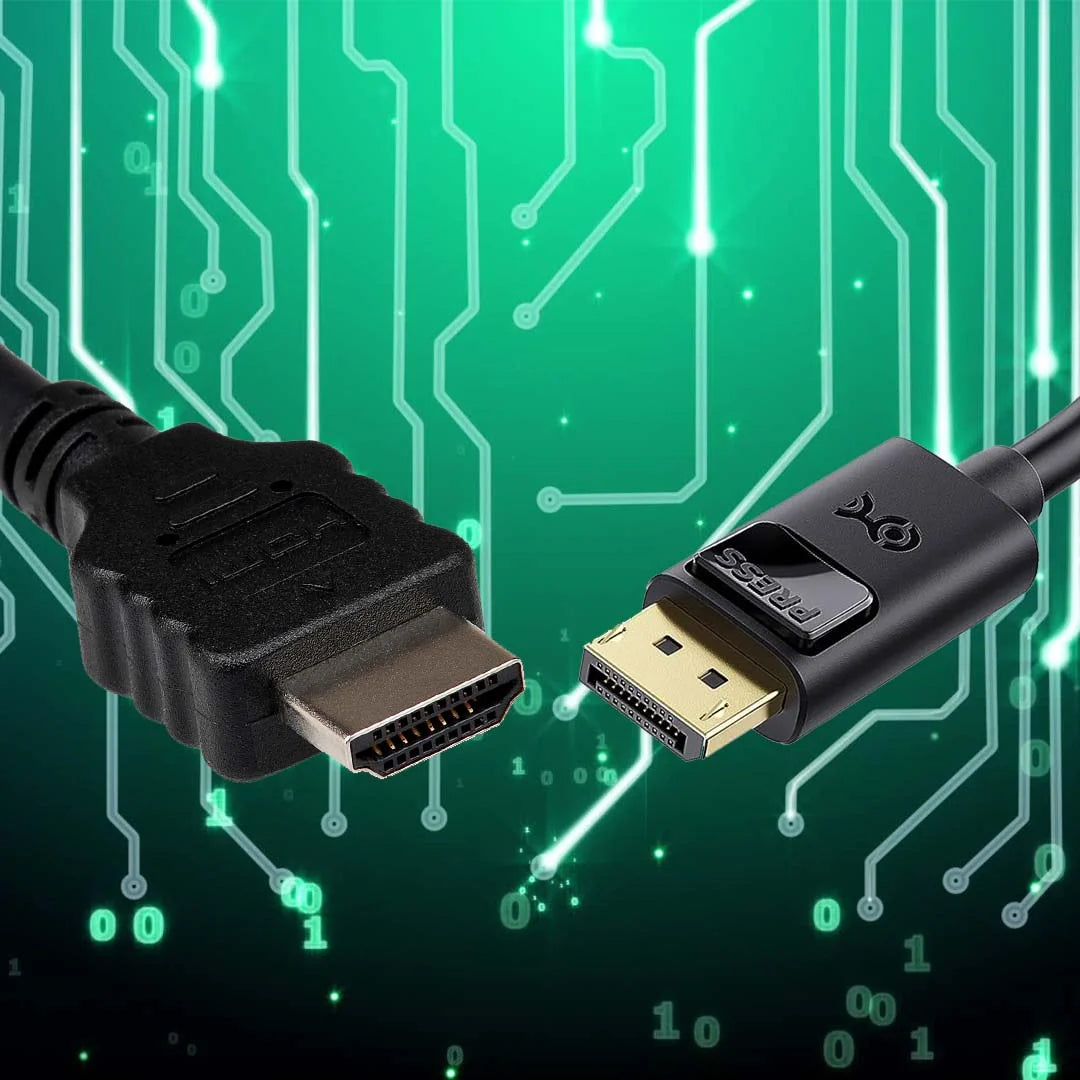You have no items in your shopping cart.

In the realm of digital connectivity, where the seamless transmission of audio and video signals reigns supreme, two titans stand at the forefront: Display Port and HDMI. As the primary interfaces for linking devices such as computers, gaming consoles, monitors, and TVs, the battle between Display Port and HDMI rages on, each vying for dominance in the market. But which one emerges victorious in the showdown of Display Port vs HDMI? To unravel this tech conundrum, let’s delve into the intricacies of both interfaces and dissect their strengths and weaknesses.
HDMI, short for High-Definition Multimedia Interface, has long been a staple in the world of audiovisual connectivity. Launched in 2003, HDMI quickly became ubiquitous, thanks to its ability to transmit high-definition audio and video signals through a single cable. With widespread adoption across consumer electronics, HDMI has undergone several iterations, each delivering improved performance and features.
One of the crucial factors distinguishing between DisplayPort and HDMI is their bandwidth capabilities and supported resolutions.
This has evolved over the years, with the latest versions offering significantly higher bandwidth. HDMI 2.1, for instance, supports resolutions of up to 10K and refresh rates of up to 120Hz, making it ideal for cutting-edge displays and gaming setups.
On the other hand, Display Port has traditionally offered higher bandwidth compared to HDMI, especially in its earlier iterations. Display Port 1.4, for example, supports resolutions of up to 8K at 60Hz or 4K at 120Hz with HDR (High Dynamic Range) support.
For gamers and multimedia enthusiasts, refresh rates play a pivotal role in delivering smooth, fluid visuals. Both Display Port and HDMI support high refresh rates, but there are differences in how they handle adaptive sync technologies.
This recently introduced support for Variable Refresh Rate (VRR) and Auto Low Latency Mode (ALLM) with the HDMI 2.1 specification. These features reduce screen tearing, input lag, and stuttering, enhancing the overall gaming and viewing experience.
DisplayPort, however, has long been associated with adaptive sync technologies such as AMD FreeSync and NVIDIA G-SYNC. These technologies synchronize the display's refresh rate with the output of the graphics card, resulting in tear-free, buttery-smooth gameplay.
Ease of Use: One of HDMI’s standout features is its plug-and-play simplicity. With its standardized connectors and cables, HDMI makes connecting devices a breeze, eliminating the need for specialized adapters or converters.
High Definition Support: HDMI has been at the forefront of delivering stunning visuals, supporting resolutions up to 4K Ultra HD and beyond. Whether you’re streaming your favorite content or immersing yourself in the latest blockbuster game, HDMI ensures crystal-clear imagery.
Audio Capabilities: Beyond video, HDMI also boasts impressive audio capabilities, supporting high-quality formats like Dolby TrueHD and DTS-HD Master Audio. This makes it ideal for home theater setups, delivering immersive surround sound experiences.
Exploring Display Port:
While HDMI has long been the go-to choice for many consumers, Display Port has steadily gained ground, particularly in the realm of computing and professional displays. Developed by VESA (Video Electronics Standards Association), DisplayPort offers its own set of advantages, tailored to the needs of modern devices and workflows.
Bandwidth Superiority: Display Port holds a significant edge over HDMI in terms of bandwidth. With higher data transfer rates, Display Port can support not only higher resolutions but also higher refresh rates, making it a preferred choice for gamers and content creators who demand fluid, lag-free visuals.
Multi-Stream Transport: Another key feature of Display Port is its ability to support Multi-Stream Transport (MST), allowing users to daisy-chain multiple monitors from a single Display Port output. This simplifies cable management and enables expansive multi-monitor setups without sacrificing performance.
Adaptability: Display Port’s design allows for greater adaptability, making it suitable for a wide range of devices, from laptops and desktops to professional graphics cards and high-end monitors. Its compact form factor and compatibility with alternate modes like USB-C further enhance its versatility.
So, which interface emerges victorious in the battle of HDMI vs Display Port? The answer largely depends on your specific needs and usage scenarios.
Consumer Electronics: For connecting TVs, gaming consoles, Blu-ray players, and other consumer devices, HDMI remains the go-to choice. Its widespread adoption and compatibility make it the most convenient option for home entertainment setups.
Standard Definition Displays: While HDMI excels in delivering high-definition content, it also supports standard definition resolutions, making it suitable for older displays or devices that don’t require the bandwidth of newer interfaces.
Simplicity: If ease of use and simplicity are paramount, HDMI shines with its plug-and-play functionality. Whether you’re a casual user or a tech novice, HDMI makes connecting devices a hassle-free experience.
When to Opt for Display Port
High-Performance Computing: For demanding tasks such as gaming, video editing, or graphic design, Display Port’s higher bandwidth and support for advanced features like adaptive sync technologies (e.g., AMD FreeSync, NVIDIA G-SYNC) make it the preferred choice. Gamers, in particular, can benefit from Display Port’s ability to deliver smoother gameplay with minimal input lag.
Multi-Monitor Setups: Display Port’s MST capability makes it ideal for users who require expansive multi-monitor configurations, whether for productivity or immersive gaming experiences. By daisy-chaining monitors, users can streamline cable management and simplify their workspace.
Professional Displays: In industries such as graphic design, architecture, and multimedia production, where color accuracy and image fidelity are paramount, Display Port’s superior bandwidth and support for high-resolution displays make it the preferred interface for connecting professional monitors.
In the eternal duel of Display Port vs HDMI, there is no clear winner. Both interfaces have their strengths and weaknesses, catering to different needs and preferences. Whether you prioritize simplicity and compatibility or crave high performance and versatility, HDMI and Display Port stand ready to serve your connectivity needs. So, the next time you’re faced with the decision of which interface to choose, weigh your options carefully and select the one that best aligns with your requirements. After all, in the world of digital connectivity, the power of choice lies firmly in your hands.
